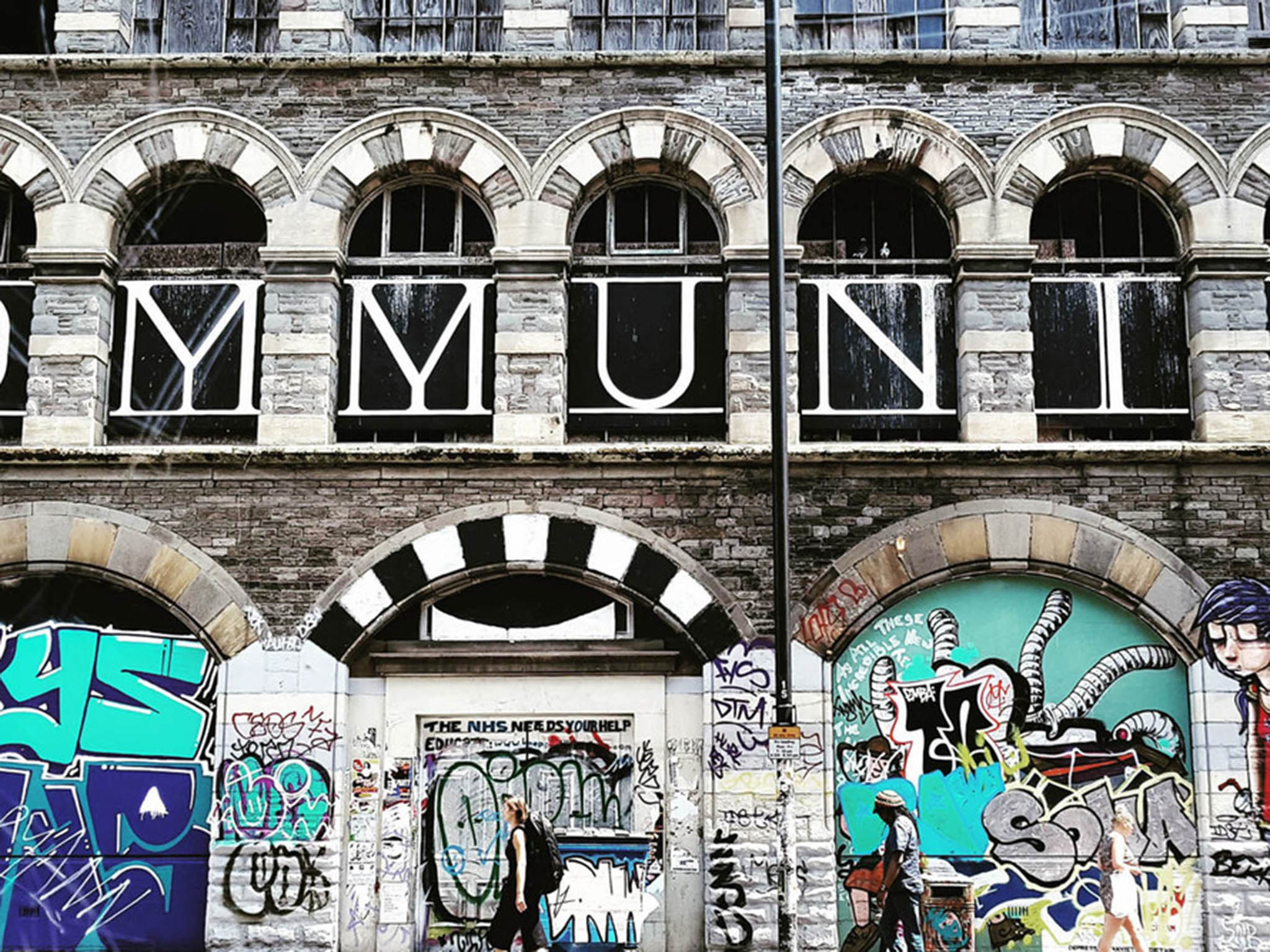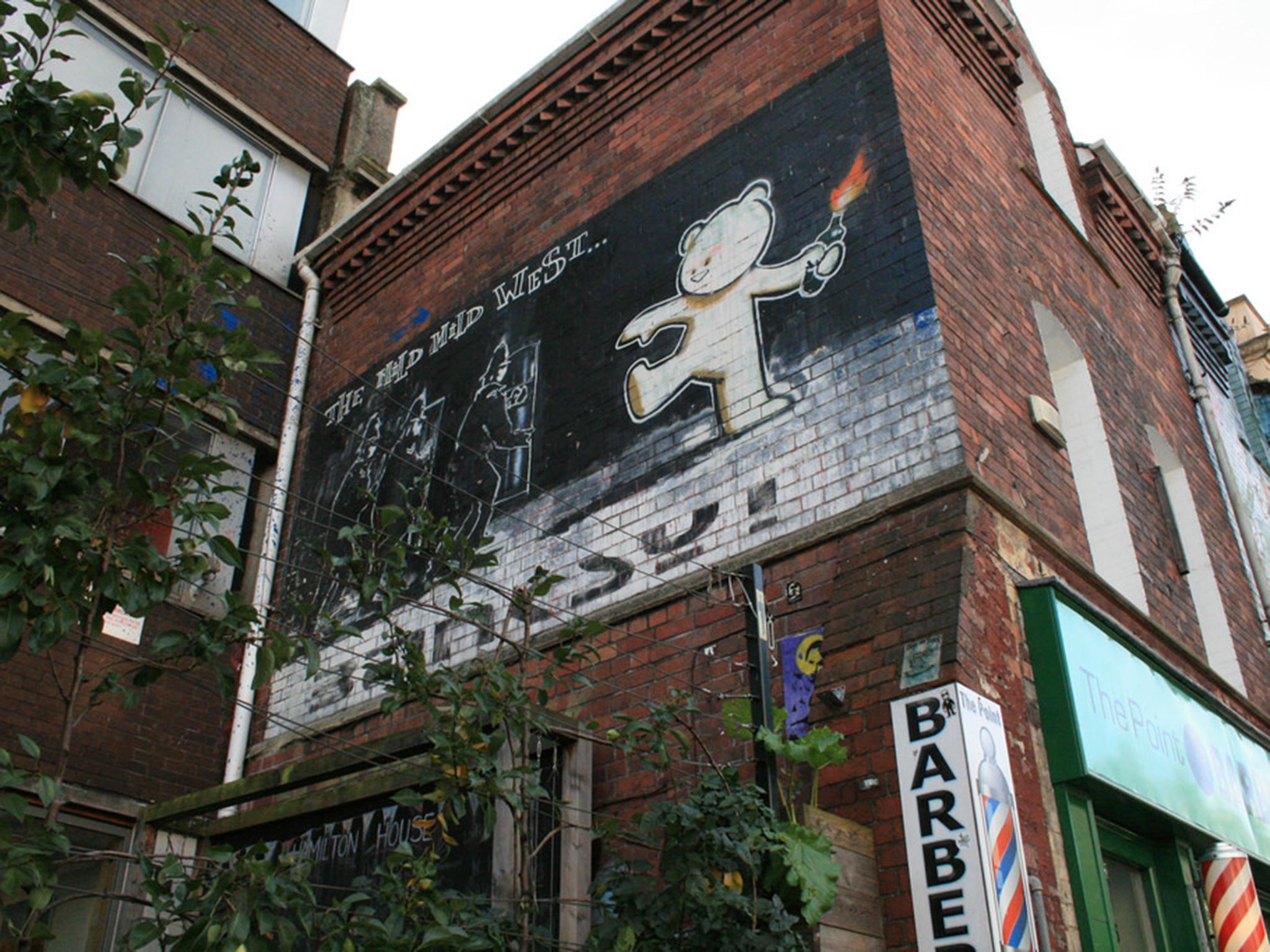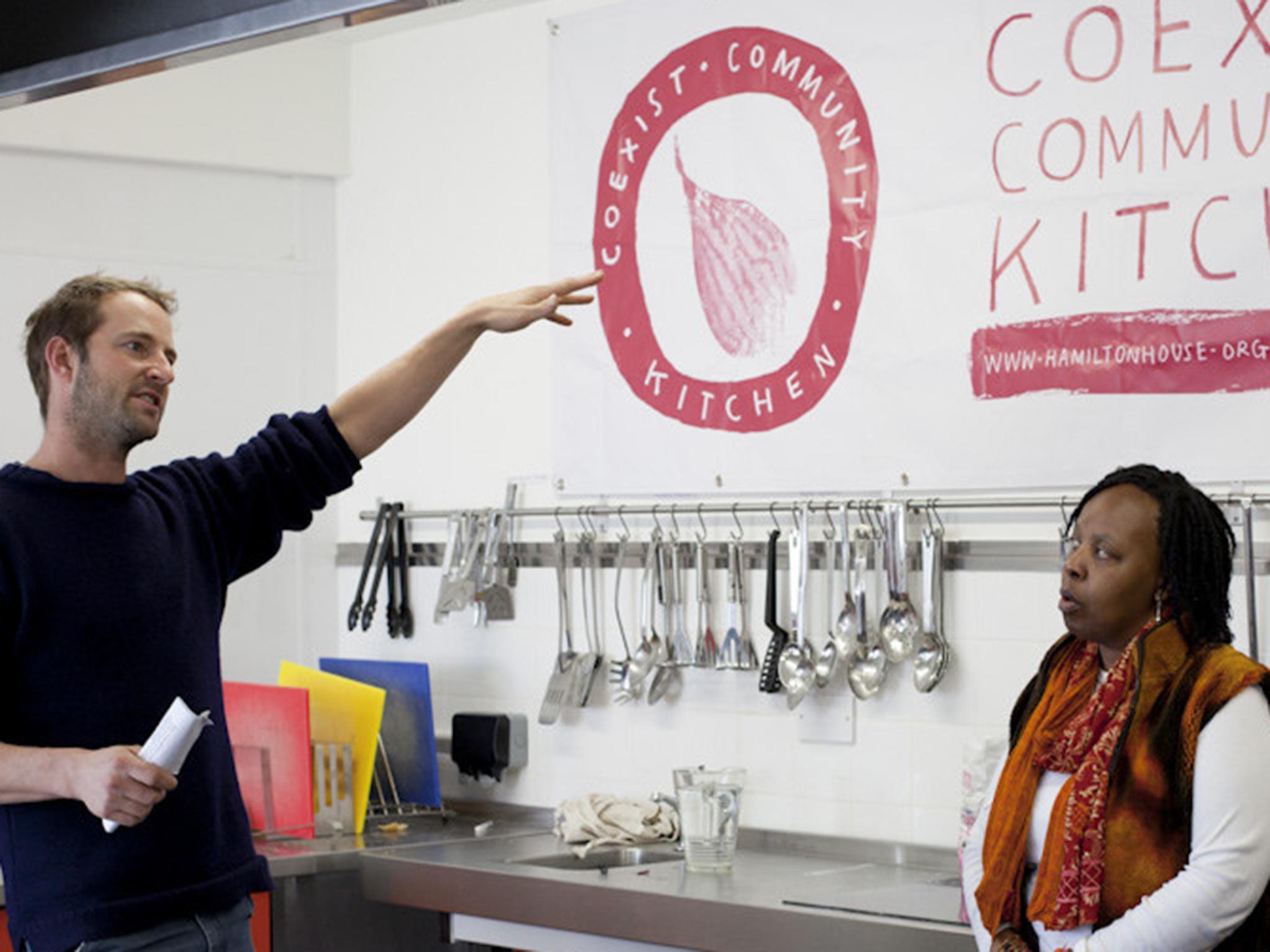Stokes Croft: The saga of one British neighbourhood reveals the perverse injustices of gentrification
It’s time for governments to put a stop to the twisted logic of gentrification

Your support helps us to tell the story
From reproductive rights to climate change to Big Tech, The Independent is on the ground when the story is developing. Whether it's investigating the financials of Elon Musk's pro-Trump PAC or producing our latest documentary, 'The A Word', which shines a light on the American women fighting for reproductive rights, we know how important it is to parse out the facts from the messaging.
At such a critical moment in US history, we need reporters on the ground. Your donation allows us to keep sending journalists to speak to both sides of the story.
The Independent is trusted by Americans across the entire political spectrum. And unlike many other quality news outlets, we choose not to lock Americans out of our reporting and analysis with paywalls. We believe quality journalism should be available to everyone, paid for by those who can afford it.
Your support makes all the difference.Nowhere is the sharp injustice of gentrification so grossly demonstrated as in Stokes Croft, Bristol. With its world-renowned street art and buzzing local scene, this area is the main fount of culture and creativity, which has propelled the city to international fame. For many years, Stokes Croft has been a seat of resilience and rebellion against the inevitable creep of corporate interests into “up-and-coming” areas.
This is a place where locals staged a peaceful sit-in against the opening of a chain supermarket – a protest which escalated into riots when local squatters were evicted by police a few days later. One of Banksy’s first murals – The Mild, Mild West – still remains, a beloved memorial to the ravers who resisted police in the 1990s.
But like so many creative hubs before it, Stokes Croft is becoming a victim of its own trendiness. Now, one of the area’s most central hot spots – Hamilton House – is at risk of being redeveloped. In our research on developments in Stokes Croft, we traced the tragic arc of dereliction, rejuvenation and gentrification up to the current moment.
The story so far

It’s hard to imagine Stokes Croft without the hustle and bustle that surrounds Hamilton House. The building has thousands of visitors every day. It is home to The Canteen, a bar, restaurant and music venue which also trains disadvantaged people in the hospitality sector.
It also hosts the Bristol Bike Project, providing bikes and services to underprivileged groups; the Misfits Theatre Company, a theatre and social group led by people with learning disabilities; and many other groups and projects providing everything from co-working spaces to event management.
The success story started in 2008 when the owners of the building, Connolly & Callaghan (C&C), invited a group of local people to come up with a plan for the community to make use of a derelict building in the centre of the high street. At the time, Stokes Croft was notably downtrodden; a place replete with pawnshops and massage parlours. Many people avoided walking through it at night.

These people went on to form the community-interest company Coexist. Their idea was simple: create the “operating system”, a social enterprise which rents out office spaces to artists, projects and various organisations under market rates. At the same time, necessary renovations and marketing were done by Coexist volunteers, keen to turn their neighbourhood into a more attractive place.
Since then, Hamilton House has been central to the rejuvenation of Stokes Croft as a cultural and creative quarter, attracting many artists, creatives, charities and entrepreneurs to the building. Coexist has become a key actor in the quarter, alongside the People’s Republic of Stokes Croft and other community groups. It even gained a moment of international fame when it introduced a period policy for female staff.
A valuable asset
Coexist reckons that Hamilton House brings in an annual revenue of around £21m, and is responsible for around 1,260 jobs in the local area. It also provides free spaces, events and exhibitions worth around £100,000 annually to the community.
By raising the profile of Stokes Croft, Hamilton House has also contributed to rising real-estate values in the surrounding area. And now, the owners of Hamilton House are seemingly tempted to cash in. In November 2016, C&C notified the council of their intent to dispose of the building, so that the community asset lock on the property would be removed.

While Coexist has, up until now, always said that C&C have been “sponsors, instigators and landlords” providing essential support for the Hamilton House project, C&C have also benefited greatly from the hard work of the local community. The financial statements for C&C reveal that when Hamilton House was valuated in September 2016, the value of the property had increased by a whopping £3.44m, from £2.1m in 2008 to £5.5m today.
Existing legislation gave Coexist the right to a first bid, but the community interest company has been unable to compete with market rates. Their impressive £5.5m, face-value bid was rejected by C&C in July 2017. Bids ranging from £5.2m to £7.5m have reportedly been made by other parties.
A clouded future
Although conversations continue, fears about Hamilton House’s future run high. C&C have served Coexist with a notice to vacate the building by August 11. An offer of a six-month recurring lease (with some caveats regarding the middle and back part of the building, which C&C want to develop) is on the table, but it means that Coexist and most of the tenants now lack the security to plan ahead.

A spokesperson for C&C said: “Connolly & Callaghan has supported and assisted Coexist for nearly a decade in its work in creating community. Coexist was brought into being in 2008 because Connolly & Callaghan wanted to create an experimental centre of excellence in sustainable community at Hamilton House, which we have owned since 2004… Going forward, our intention is to maintain a flexible approach towards the future of Hamilton House. We hope to see Coexist continue its work in community building, and to also see Coexist build its own long-term social, environmental and financial stability.”
Coexist and its tenants have made Stokes Croft into a more attractive area with their cultural labour. Here, local values, practices and people have worked to achieve social goods for the whole community, as well as those who visit. Now, the people who lifted up their local communities could be deprived of the fruits of their labour.
Of course, this resilient community is already exploring possible solutions. Coexist and the People’s Republic of Stokes Croft are proposing to use Bristol’s community land trust, to take over the building. This would allow the property to be owned communally, protecting this important infrastructure from market interventions.

But for these solutions to work, regulation must be put in place, to limit the power of real-estate owners and to acknowledge those who regenerated the area. Gentrification is often understood as inevitable, but it can also be deeply unjust. It’s time for councils and governments of all colours to recognise the twisted logic of gentrification – which leaves strong and resilient communities at the mercy of private developers – and put an end to it. It’s only fair.
Fabian Frenzel is an associate professor in organisation studies, University of Leicester and Armin Beverungen is a junior director at the Digital Cultures Research Lab, Leuphana University. This article first appeared on The Conversation (theconversation.com)
Join our commenting forum
Join thought-provoking conversations, follow other Independent readers and see their replies
Comments